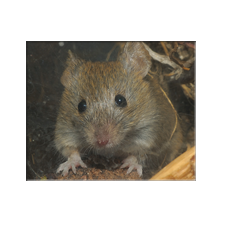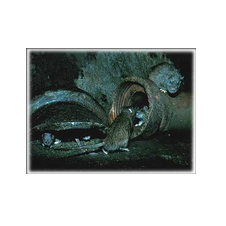SERENA ECOSERVIZI
Main menu:
- Home Page
- About us
- Hygien environmental
- Cleaning services
- Catalog
- OFFERS
- OUR PROJECTS
- Blog
Brown rat
Hygien environmental > Rodent control > Rats and mouse




Brown rat Rattus norvegicus
also known as the Brown Rat, Rat Rat of drains or sewers (Rattus norvegicus - Berkenhout 1769) is of Asian origin (fossil record dating back to the late Pleistocene and Holocene evidence of the presence of this species in northern China, southeastern Siberia and the Japanese island of Hondo [1]). Reported in Western Europe only from the early '700 (in Denmark in 1716, in the United Kingdom in 1731 and in France in 1753), in little more than a century, this large rodent has invaded a large part of the planet, particularly by using the transport-related business activities. In Italy it has spread to all the major islands and continental regions, with the exception of the areas where most high is localized only in close adjacency of human settlements. It is also present in some of the smaller islands such as Elba, Pianosa and Ustica [2]. Its colonization of the land is, however, still in place.
Animal active mostly at night, the brown rat in nature is an accomplished digger who realizes complex galleries with more exit holes where it builds its nest, usually near water. In urban and suburban areas, where this rodent has reached a very high spread, he attended different environments, including the landfills, sewers, the steep, rail and road, the banks of rivers and collections of stagnant water, the gardens and urban parks. The brown rat often penetrates into buildings through holes and openings in poorly sealed and of these almost exclusively colonizes the lower parts, such as cellars and basements. In rural areas it is common in ditches and drainage canals and irrigation, or in buildings such as warehouses, barns, areas of housing of farm animals and animal shelters, places greater the presence of food.
Swimmer is able to swim for several hours, even creeping without difficulty in pipes and ducts, which dates back propped their feet.
description
CaratteristicheQuesto large rodent from robust physique can reach 40 cm in length (including the tail), with a weight that generally varies between 200 and 500 grams. The coat color is brownish-gray on the back and light gray on the belly, on which can be streaks or white spots. The muzzle is short and square, less pointed than that of other species, with small eyes and ears undeveloped, with no hair. The tail is short and very thick, covered with sparse hairs and the two-tone: dark top and lighter at the bottom.
The brown rat is an animal very strong, able to perform jumps high above 50 cm and long jumps are sometimes better than a meter. You can also drill during his excavations cement barriers thin and soft metals.
Reproduction
The brown rat is a rodent very prolific and the reproductive period, in the presence of abundant food and favorable climatic conditions, it can last the whole year. In populations living in open environments, it is generally interrupted during periods too cold or too warm. The females reach sexual maturity at the age of 8-12 weeks and can give birth from 6 to 9 small for childbirth, for a total of 5 parts per year. The gestation period lasts between 20 and 24 days. The females of the brown rat, as well as with those of Mus domesticus, have postpartum estrus and are therefore able to mate again immediately after giving birth to their young.
Supply
The brown rat is able to adapt to the availability of food more disparate, feeding virtually anything edible. In the wild it feeds on roots, seeds, fruits and green parts of plants, but also of invertebrates (insects and gastropods) and living specimens or carcasses of small vertebrates such as amphibians or other rodents (mainly voles and mice domestic ). In some cases it may prey on aquatic animals such as crustaceans and molluscs and, on occasion, even fish. Like other rodents, the species Rattus norvegicus is a necessary necrofaga that also comes to practice cannibalism, mainly at the expense of the elderly or sick individuals.
In the vicinity of man this species feeds on various types of food, accumulation of waste, animal feed available in pens and cages of pets or farm animals. If present in a sewer, can eat any kind of organic substance available.
If easy to carry, the food that exceeds the needs of the moment is often transferred to another safer place to be consumed later or accumulated.